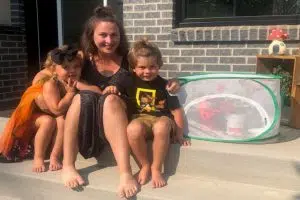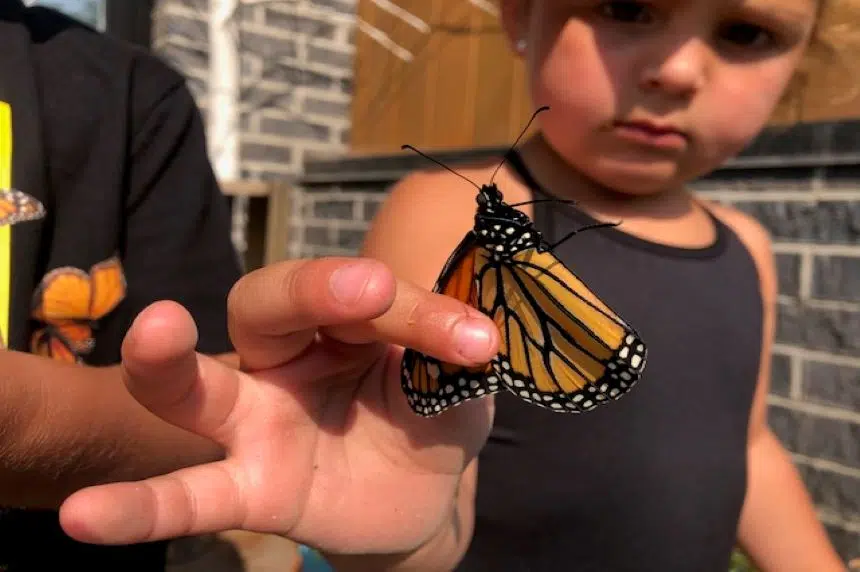A Saskatoon mother and her two children have been working on a unique educational project over the summer — raising and releasing the increasingly rare Monarch butterflies.
Monarch populations have dwindled by as much as 90 per cent because of habitat loss. The butterflies are sometimes seen in Saskatoon, but are more common in the southern part of the province, and throughout the U.S.
They complete the longest insect migration in North America, flying south to Mexico, according to Nature Saskatchewan.
Susan Bobbitt, who’s a developmental pediatrician, says raising the colourful butterflies has been an incredible learning process for her children, five-year-old Luca and three-year-old Anna.

Anna, Susan and Luca Bobbitt (left to right) are raising and releasing Monarch butterflies. (Lara Fominoff/650 CKOM)
It all started out a few months ago when Bobbitt bought a couple of Painted Lady butterfly kits at a local teaching supply store — one for Luca’s preschool class and one for home.
“We had such a fun time with that process that I looked into getting some Monarch larvae that was sent to us from Manitoba, and we’ve been doing the same,” said Bobbitt.
She ordered a kit that contained Monarch larvae from Manitoba.
“Every morning we raced out to see what changes happened overnight, and it’s just been incredible,” she said.
The actual cost of the kit was around $60, but there was also a considerable amount of time and effort making sure the larvae were healthy and sourcing the milkweed they need to survive.
“Monarch butterflies, that’s all they eat … and Monarchs are threatened with extinction because there’s a decreased milkweed supply,” Bobbitt said. “And so here in Saskatoon, this is kind of about the most northerly that they do go. We needed a fairly substantial amount of milkweed; the larvae probably eat about four to five big leaves a day.
“One whole level of our fridge was milkweed,” she laughed. “To keep the six larvae going.”
Once the larvae grew old enough and strong enough, they attached themselves to a part of a mesh cage that Bobbitt bought, and formed a chrysalis — or pod — where they remain for anywhere from 10 to 14 days.
From there, they went through a process called metamorphosis, to become the beautiful winged orange and black butterflies. Susan, Luca and Anna named their butterflies and kept them for 24 hours to make sure they were strong and healthy before letting them go.
So far, four have hatched. Their next journey, according to Luca?
“Mexico,” he said.
“That is where they go. That is where they migrate to,” said Bobbitt.











